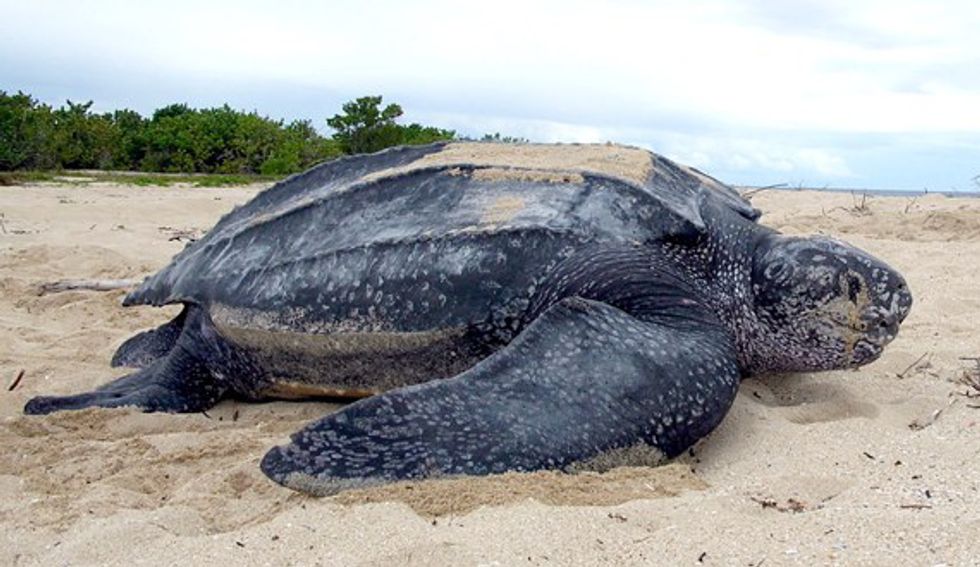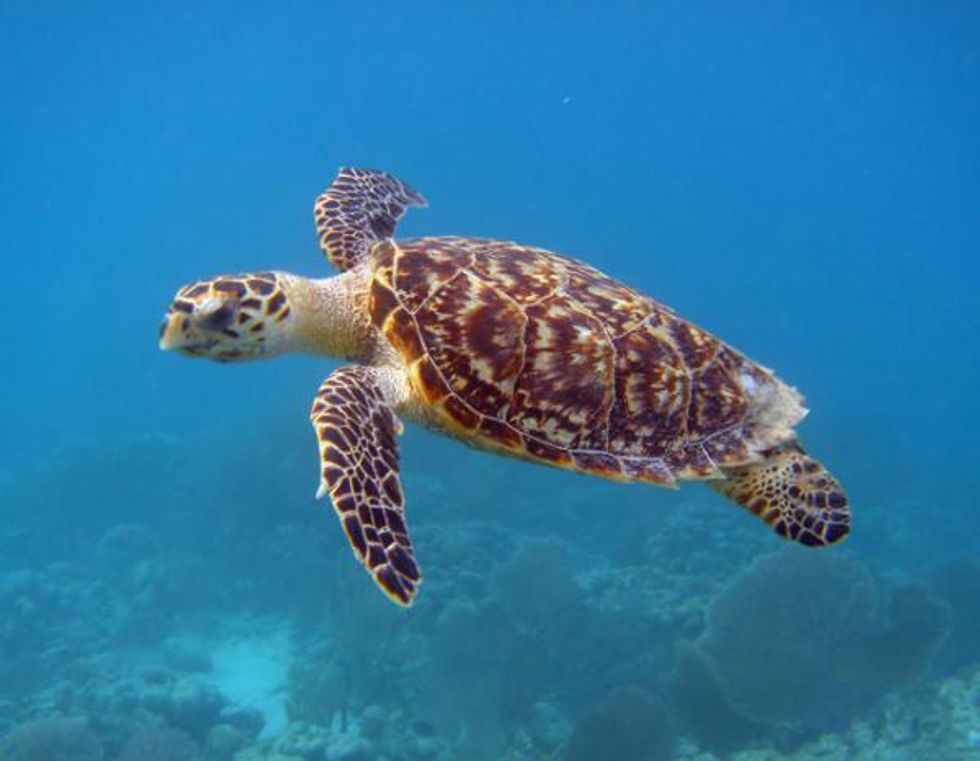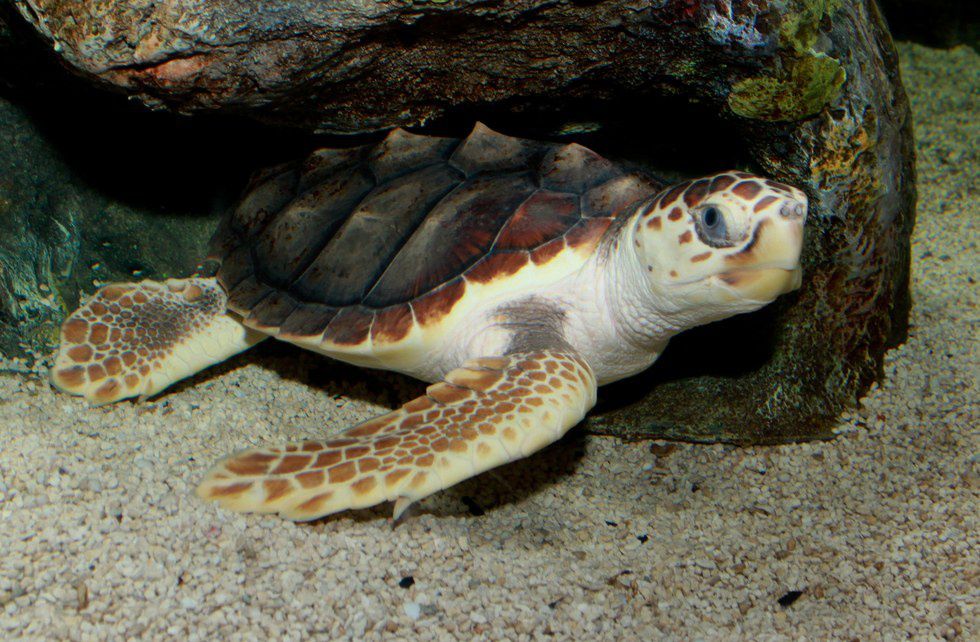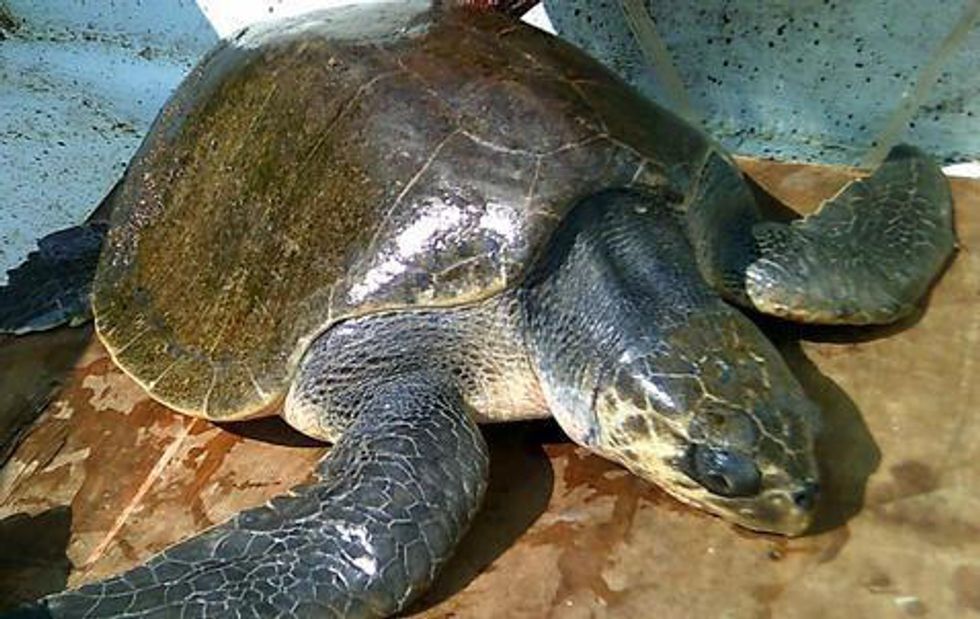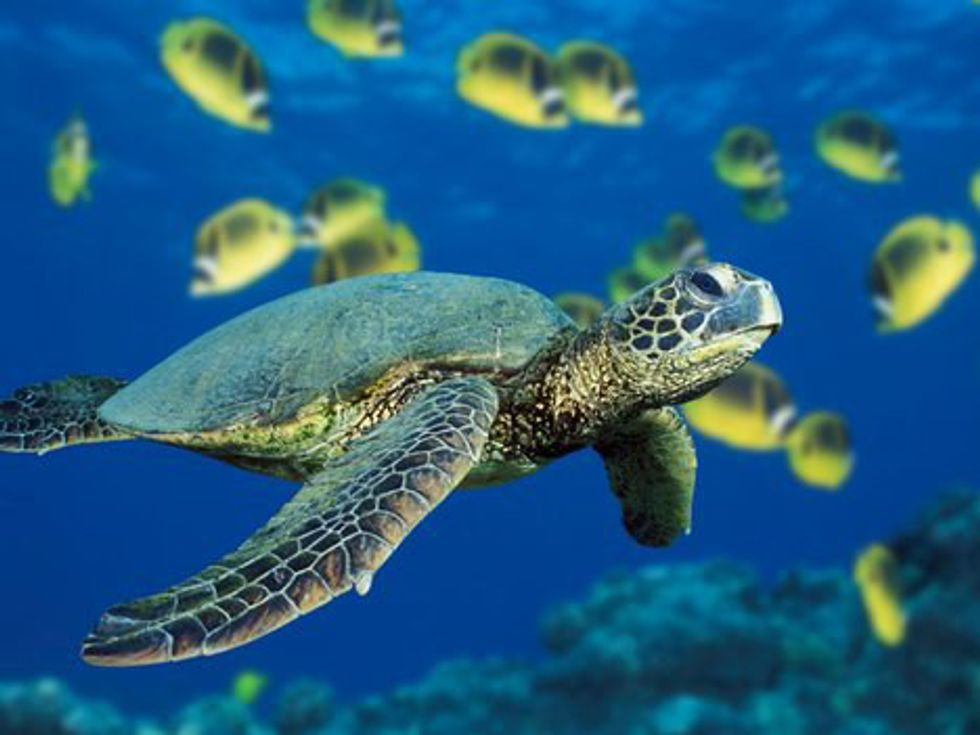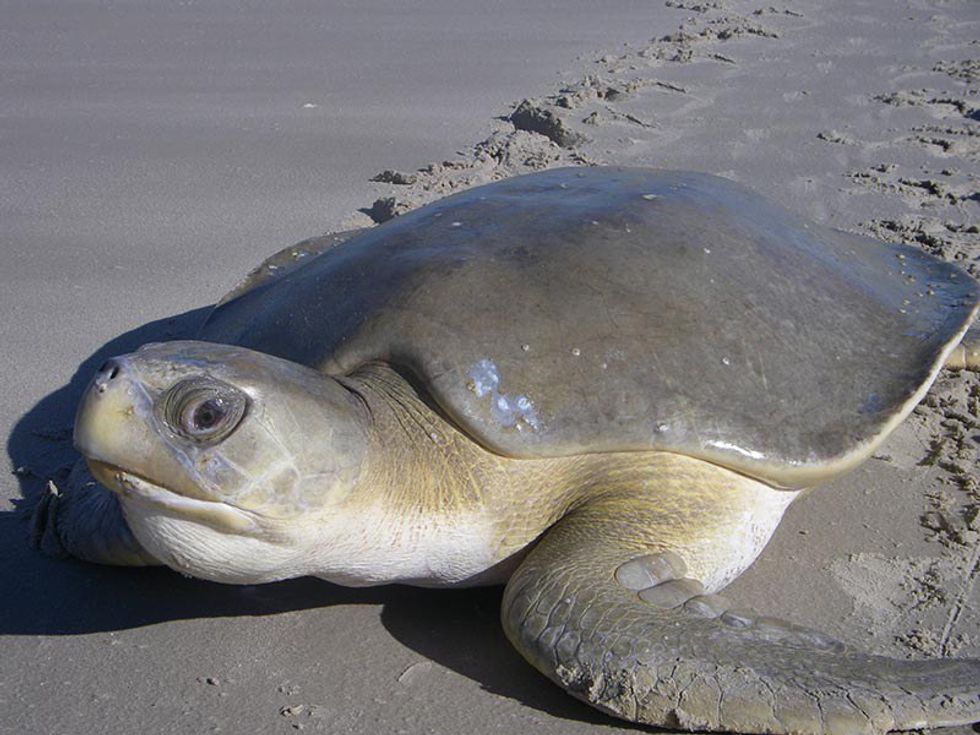Recently, I visited the Tennessee Aquarium where I learned about a sea turtle named Oscar. Oscar is a Green Sea Turtle who had been hit by a boat and had major injuries along his carapace. He is missing one and a half flippers, and, after his accident, his lung was protruding from a wound. When I saw him at the aquarium, he was completely healed and was swimming around the saltwater tank with other turtles and sharks. The beauty of the turtle and his story made me curious about the different kinds of sea turtles. So I have researched and found that there are seven different species of sea turtles.
The largest of the turtle species is the Leather back.
The Leatherback (Dermochelys corlacea) grows between four and eight feet long and weighs between 500 and 2,000 pounds. Their diet consists of jellyfish and tunicates. Their shells are different than other turtle's shells. The bones on their backs is covered with leathery skin, from which they received their name. The flexibility of this special carapace allows them to dive deeper than other species of turtle reaching depths of 4,000 feet and lower! The Leatherback mates and nests in subtropical coastal regions, primarily inhabiting the Pacific, Atlantic, and Indian oceans living full time in the open sea.
The second largest of the turtles is the Green Sea Turtle.
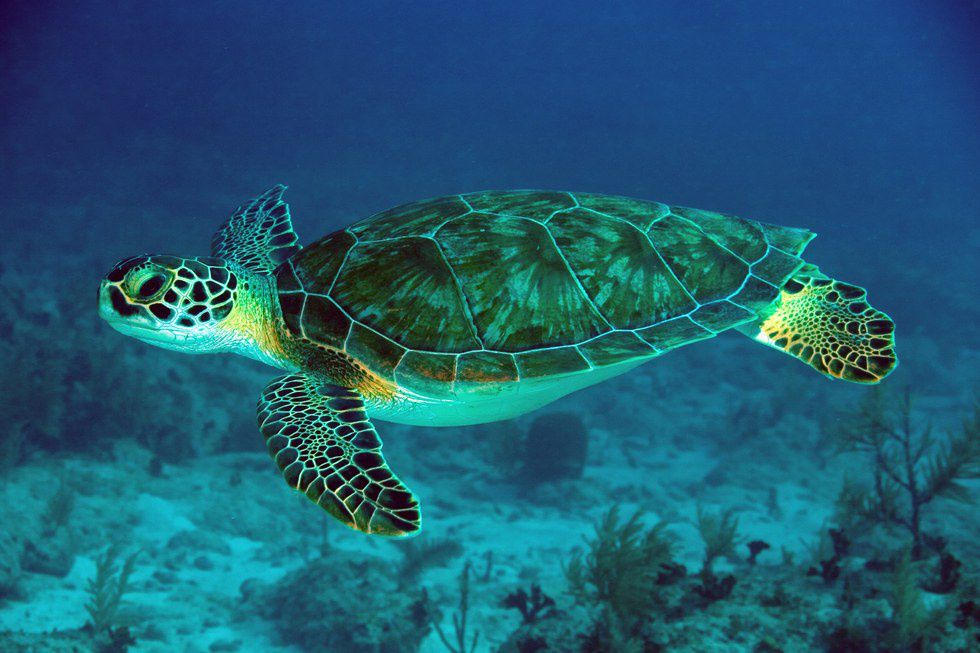
The Green Sea Turtle (Chelonia mydas) weighs up to 500 pounds and grows up to lengths of 4 feet. The adult diet consists of sea grass, sea weed, and algae. These turtles are known for basking, but the only places they come ashore are in Hawaii, Galapagos islands, and parts of Australia. They nest in over eighty countries.
Hawskbill Sea Turtles (Eremochelys imbriacata) inhabit tropical waters worldwide.
The live in coral reefs, rocky areas, lagoons, mangroves, oceanic islands, and shallow coastal areas. One Hawksbill can eat over 1,000 sponges per year. Their diet of sponges creates toxic chemical build up in their tissues causing the species to be dangerous for human consumption. Their beak resembles that of a bird's which is the reason for their name. Hawksbill turtles weigh 100-200 pounds and are 2-3 feet long. They are loners, nesting solo, spread apart from others of their kind. Their nesting seasons last two weeks and the average Hawksbill will nest on average four times during that season. Their nests have 140-200 eggs! This species is the most endangered turtle.
The Loggerhead (Caretta caretta) lives in every ocean of the world.
They grow up to four feet and can be anywhere between 200 and 400 pounds. The Loggerhead's diet includes crabs, conchs, and whelks. They are named for their big head and crushing jaw.
The Olive Ridley Sea Turtle (Lepidochelys olivacea) are much smaller weighing 75-100 pounds with a length of two to two and a half feet.
They have a pale green shell and have a diet consisting of crabs, shrimp, lobster, urchins, jellies, algae, and fish. They nest in arribadas and are mostly pelagic.
The Kemp's Ridley Sea Turtle (Lepidochelys Kempii) is the smallest species of turtle.
They weigh between 75 and 100 pounds but do not grow longer than two feet. The Kemp's Ridley also nests in arrabadas. They have triangular heads, hook beaks, and strong jaws. Their diet consists of crabs, fish, jellies, shrimp and molluscs. They live in the Gulf of Mexico and on the Atlantic coast as far north as Nova Scotia.
The Flatback (Natator depressus) weighs up to 200 pounds and is as long as three feet.
It has the smallest distribution of turtle population only nesting in Australia. The saltwater crocodile is the Flatback's primary predator. They eat sea cucumbers, jellies, corals, shrimp, crabs, molluscs, fish and sea weed. They are not pelagic, living in waters no deeper than 200 feet. They restrict their distribution to tropical continental shelves and coastal waters. The predators of the Flatback turtles are Sand Monitor Lizards, Night Herons, pelicans, and feral pigs (which consume Flatback nests).




